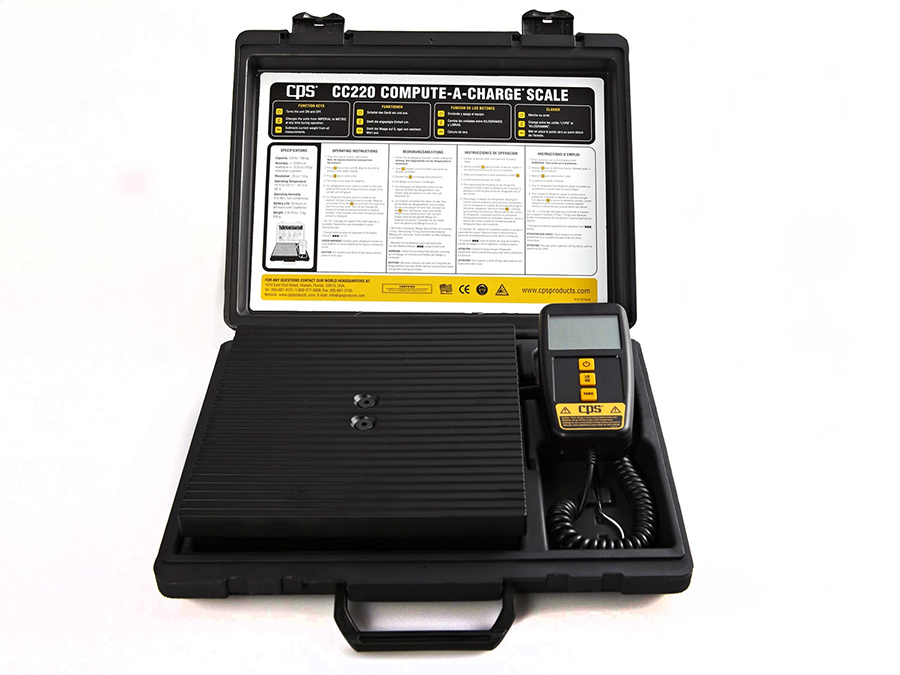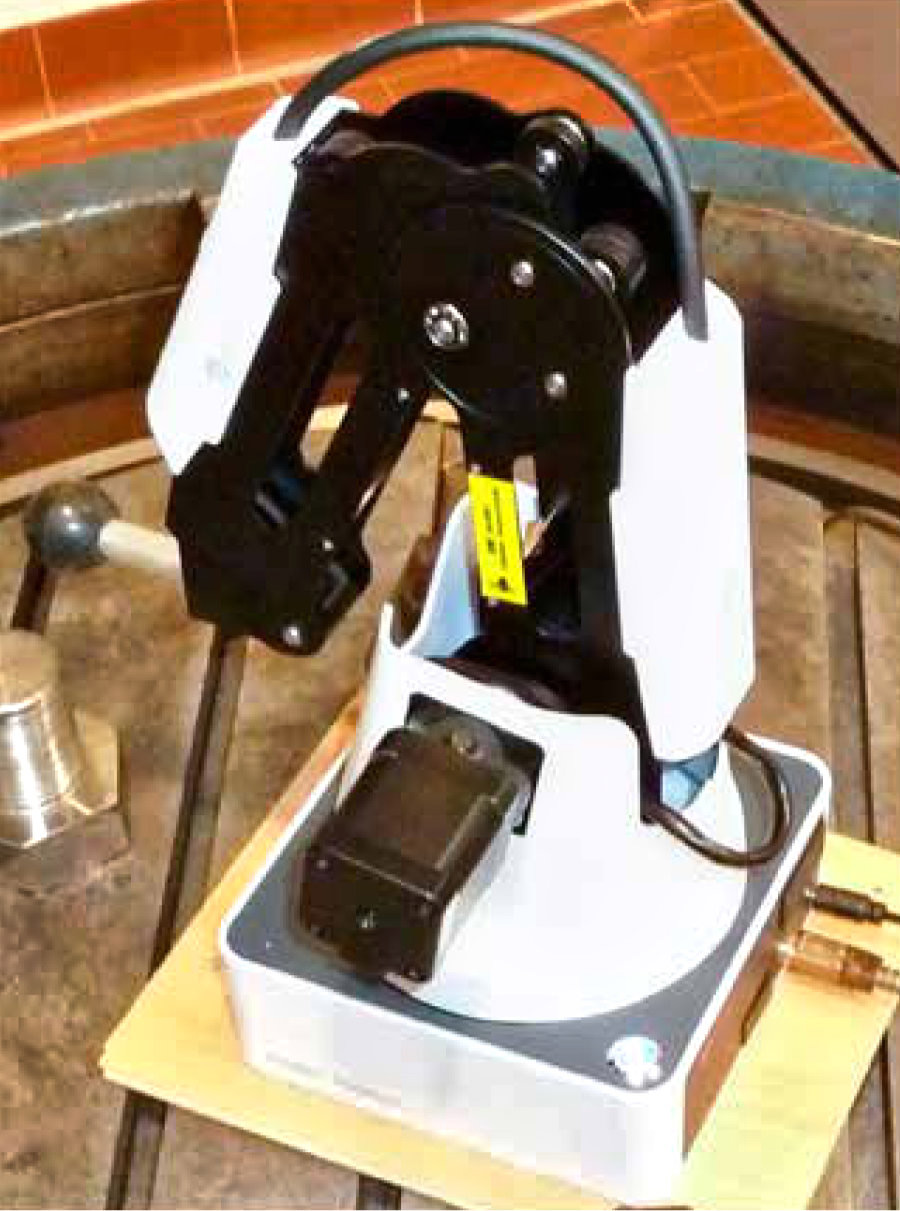11 June 2025
|
A behind-the-scenes look at service equipment testing with Brad Bray, Managing Director of Evomart and UK distributor of CPS Products.
For many end-users, the safety and reliability of their equipment is taken as a given: a necessary condition for doing business. However, underpinning every compliant product is a regime of safety testing and validation procedures, which can be both fascinating and enlightening for those who take an interest in the process.
In this article we draw on the work of Holger Konig and Thomas Enkemann of Ref-Tech Engineering, and Timm Kolsch of CPS Products Europe, to bring technicians a rare glimpse into the world of equipment safety testing.
Safety is always essential but the growing use of hydrocarbon-based refrigerants, such as in classes A2L and A3, adds another dimension to safe working especially in relation to the ignition hazards of flammable refrigerants.
It's no secret that the F-Gas phasedown aims to reduce the use of hydrofluorocarbons (HFCs) and other fluorinated greenhouse gases (F-gases) in HVAC/R systems. It’s all about reducing active use of gases classed as having high global warming potential (GWP). The safety challenge that comes with this transition is that refrigerant gases with lower GWP are often more flammable, and as such are susceptible to sparks and other sources of ignition.
Because of this, CPS Products has taken steps to both design equipment for safe operation with flammable refrigerants, and to have them independently tested for ignitability at the National Metrology Institute (PTB) in Germany in partnership with Ref-Tech Engineering.
Spoiler alert: The products that CPS has tested show no ignition is to be expected, but it’s really interesting to see how they proved it.
So how do they know? By sharing these insights, we aim to demystify the sometimes opaque world of product testing and provide a deeper understanding of what really goes on behind the scenes.
If everything always went according to plan, risks would always be minimal but it’s because people make mistakes, that testing aims to take account of those more serious situations too.
The intended use of service equipment of course includes correct handling of approved refrigerants and avoiding refrigerant release, as required by current legislation. When correct protocols are followed, flammable atmospheres do not arise from refrigerant handling, neither near the equipment nor in supply lines. However, this all relies on technicians doing what they are supposed to do, proper installation and arrangement of the exhaust hose, and the equipment itself being leak proof – all of which are crucial to preventing accumulation of gas and formation of a flammable atmosphere – particularly in closed or poorly ventilated rooms.
According to the EU Machinery Directive, a risk assessment of service equipment, such as a vacuum pump or refrigerant recovery unit, must consider its intended use and also reasonably foreseeable misuse. This includes the possible release of refrigerant, and the possible creation of a flammable atmosphere, due to incorrect handling by the service professional. Although behavioural change measures such as training, warning labels and safe systems of work can go along way to reducing the frequency of human errors, mistakes can’t be completely eliminated. And though ‘technical protective measures’ might be used to minimize ignition risk, by using forced ventilation of the working environment to prevent the formation of a flammable atmosphere, implementation of this is not something within the control of service equipment manufacturers.
However, the design of service equipment is within the manufacturer's immediate influence and so CPS Products Europe took the approach that testing the ignition properties of the equipment itself was worthwhile.
To really put the equipment through its paces, lab tests were carried out on service equipment to determine if a hazard or ignition effect could be ruled out through misuse. This included mimicking the accumulation of R290 refrigerant that could arise, in closed and poorly ventilated rooms, as a result of incorrect practices during service work or maintenance. If a concentration above the lower explosion limit for R290 of 38 g/m³ is reached, an ignition might be triggered by any existing effective ignition source, with various consequences.
The lab test
With all of that in mind, an investigation of the ignition effectiveness of service equipment in a flammable atmosphere is justified. The investigation, then, aimed to determine whether the service equipment under examination provides a source of ignition in a flammable R290/air atmosphere, both during typical operating processes performed by the service technician as part of normal intended operation in accordance with operating instructions, as well as in the event of mishandling or incorrect practice.

CPS CC220 scales
CPS Products devices included in the tests were a scale, a fitter's aid, a vacuum pump and a refrigerant recovery unit. Each device had unique correct operating instructions, which were all followed during the tests to simulate regular use in normal operation.
The tests were set up in a National Metrology Institute (PTB) test chamber that could contain flammable air-propane atmospheres. In these laboratory conditions, an ignitable mixture of 5.2 vol.% propane in air, served as the flammable atmosphere for testing.
Yes, we used robots
A desktop robot, itself tested for ignition safety, was used to operate the service devices within the test chamber. Ref-Tech Engineering programmed and extensively tested the operating procedures with the robot, ensuring the robot would reliably start up in the test chamber and carry out each test procedure without error. The procedures for operating and filling the test chamber were ensured by the National Metrology Institute (PTB) in Germany.
The devices were connected to supply and control lines, and a test run was carried out to ensure correct operation by the robot which was controlled by a computer outside the chamber, its movements within the chamber being tracked by a high-speed camera.
Within the closed test chamber containing the air-propane mixture, the operating procedures were repeated for each device. A high-speed camera documented any possible ignition event, while video recordings were made in the test chamber to document the execution of the operating procedures according to plan.

Operating robot within the test chamber
Test results
Although safety first was clearly the order of the day for all testing, all tests carried out were without an ignition event, in spite of the high flammability of the atmosphere the tests were conducted in.
The test results prove that in the event of a faulty release of flammable refrigerant and the formation of an explosive atmosphere in a service situation or faulty delivery of an explosive mixture, no ignitability is to be expected from the devices tested.
However, this conclusion does not apply to poorly maintained, damaged or incorrectly repaired equipment. Furthermore, it should not be inferred from the investigation that operation of the service devices in an explosive atmosphere would be permissible, or lead to careless actions when servicing refrigeration systems with flammable refrigerant. The avoidance of releases and thus the prevention of the formation of explosive atmospheres is the most important measure to prevent accidents, especially since the presence of other effective sources of ignition cannot be ruled out.
Summary
We were obviously delighted with the result. This testing demonstrates CPS Products’ unwavering commitment to ensuring the highest standards in their equipment. By prioritising this testing and publishing the results, CPS Products Europe has upheld the company's reputation for excellence in HVAC/R technologies.
A more detailed report can be found here.








